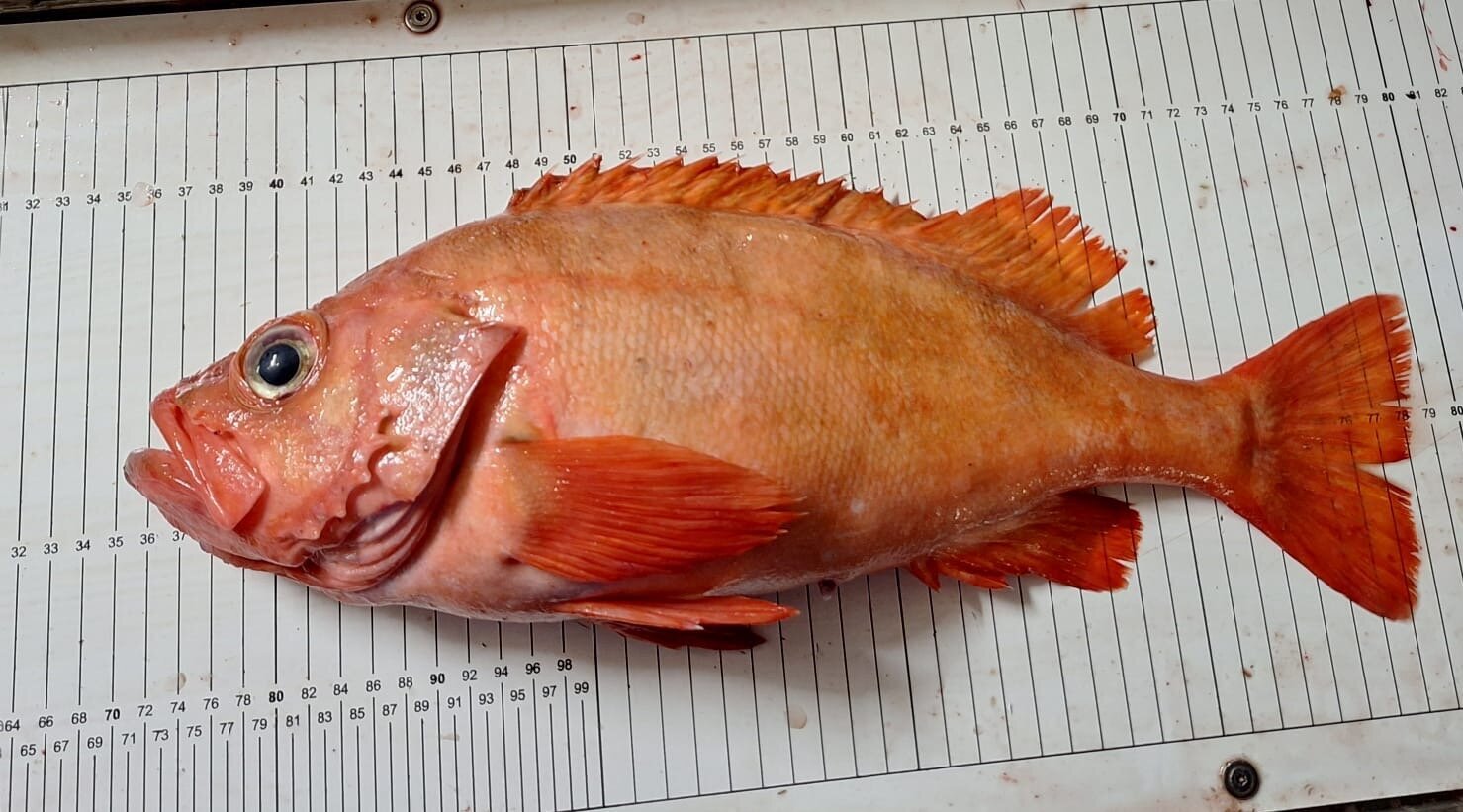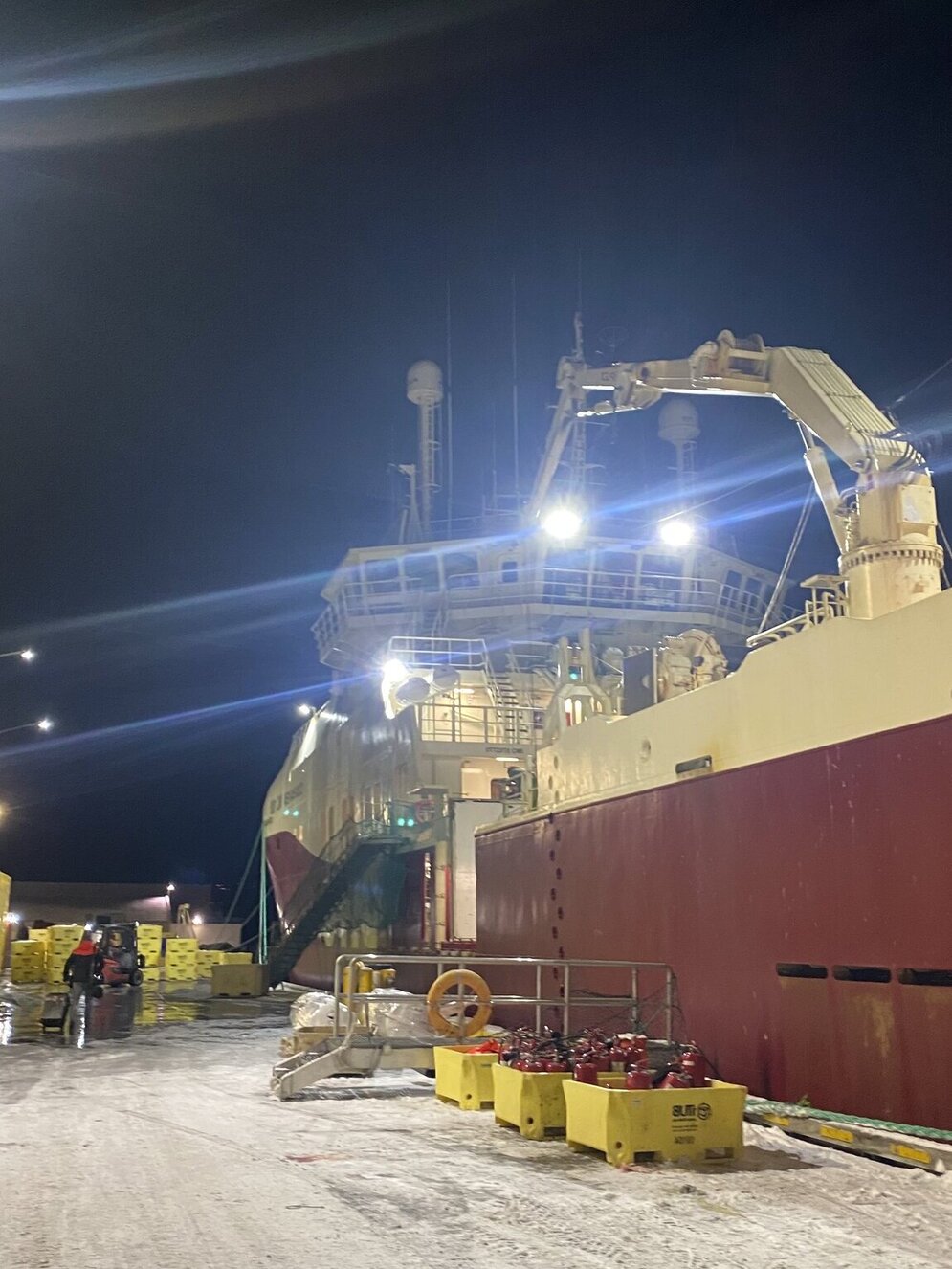In December 2024, Katrine joined as a PhD student alongside our colleague Sakis Kroupis, who was on board as scientific observer on behalf of the Thünen Institute.
The “Cuxhaven” is a large trawler, approx. 81 meters long and 16 meters wide, operating under the German flag for the “Deutsche Fischfang-Union” (DFFU), based in Cuxhaven, but mainly operating off Greenland and Norway. Sampling this vessel for catch composition and biological parameters is part of the scientific observer programme by the Thünen Institute under the EU-Data Collection Framework (DCF). The “Cuxhaven” mainly targeted cod in the waters off Dohrn Bank - situated between Iceland and Greenland.
The mission of Katrine was to collect stomach and stable isotope samples from two species of redfish (Sebastes mentella and Sebastes norvegicus) on the East Greenland Shelf for her PhD research. This project aims to understand the distribution and ecology of both species in order to enhance our knowledge and improve scientific fishing quota recommendations.

![[Translate to English:] [Translate to English:]](/media/_processed_/7/1/csm_IMG_7977_large_1defaf5de1.jpg)



















